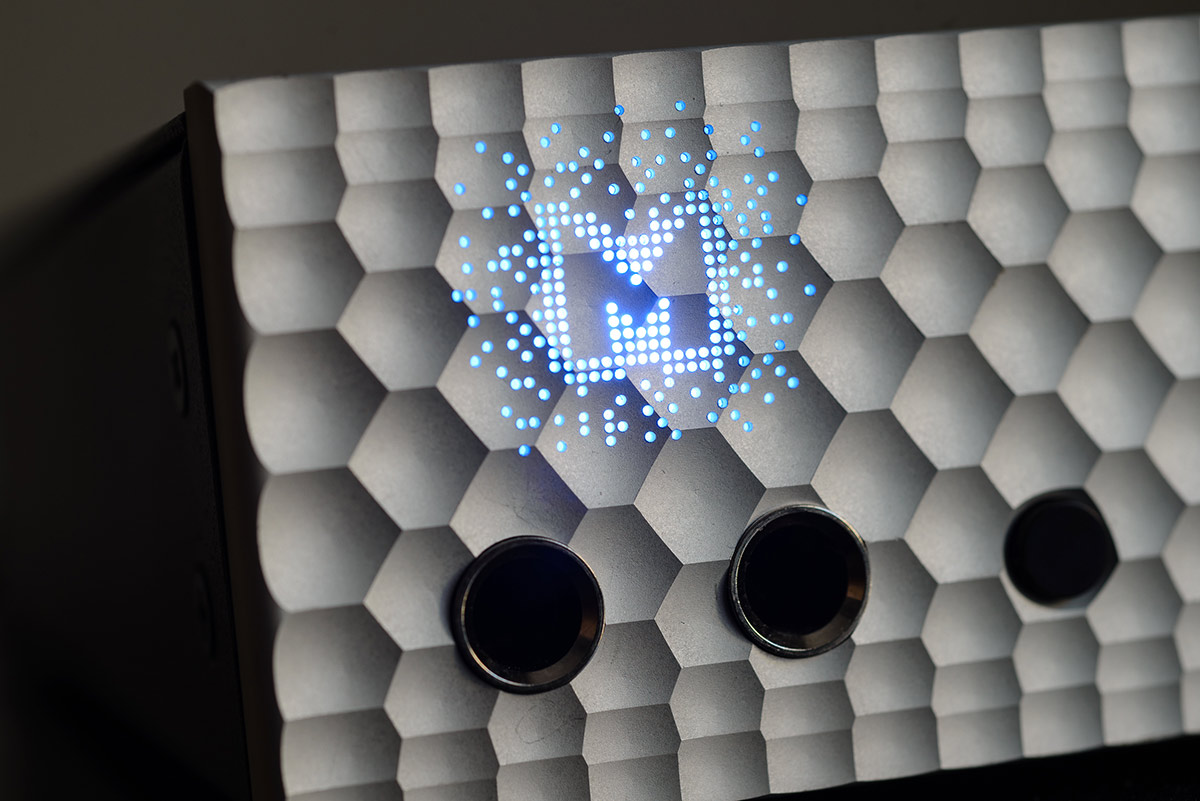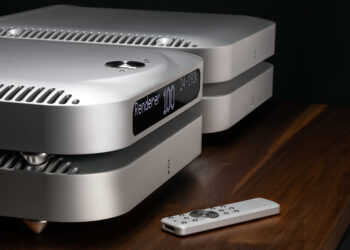Not long ago, I had a flagship DAC on my review. Manhattan II American companies MytekThis time I have in my system a medium product of the company, a small DAC, or, more precisely, a combine harvester. Brooklyn DAC+.
Behind the inconspicuous "plus" in the name of DAC hides a significant reworking of the previous version of the device, which was simply called Brooklyn DAC. First of all, the changes concern the DAC chip, instead of Sabre ES9018K2M now here ES9028Pro, there are less significant differences in the power supply, for example. ES9028Pro is a DAC from the new family of Sabre, which takes into account and fixes some shortcomings of the previous model, manifested in the typical implementation of this chip.

The device is a compact device with a non-standard design of the front panel in the style of a senior Manhattan DAC. In the left upper corner, a lot of thin holes with the help of lighting form the Mytek logo. It feels as if the logo is glowing from the inside through the panel. It looks very impressive. The color of the logo and the intensity of the glow can be changed. When the device is off, the holes on the uneven panel are almost invisible. Excellent design move, unexpected for the manufacturer of professional equipment.
All information is displayed on the dual OLED display, the required modes are selected by four buttons, two on the sides of the screens, mode changes are made with an "endless" rotary knob. The output level can be changed digitally and analogue, separately on the preamplifier outputs and on the headphone amplifier. A line output mode can be selected (i.e. the unit will operate as a pure DAC), while the headphone volume control will be saved. You can switch between modes manually or automatically, you can select
There is a screen saver mode for the screen, the signal strength (in numbers and graphically as a certain scale) and the output level (in the same style) are displayed.
The unit is well equipped: there is even a separate analogue input as well as an input for a block, plus a separate input for a 12V power supply that can be used instead of the built-in one.
The DAC supports the MQA option - decoding the studio quality stream via streaming services. The description of MQA principles is easily available on the Internet, including in Russian.

On the whole, the device has left a very pleasant impression, it is easy to understand its functions, the control is comfortable and the appearance is quite unusual for a studio device.
Today, on the new versions of the chip ESS Sabre is no longer worth talking about the characteristic shortcomings of the sound of the past generation, the ESS company has done a great job, resulting in the first place goes to the specific implementation of the device on their chips, and it is almost impossible to distinguish Sabre by hearing. As in the sound of the older model, there are no disadvantages of the past generation of Sabre.
The apparatus sounds flowing, I would even say it is singing, it shows the after-sounding well, the picture is complete, the instruments and the games are connected, and all the performers play in one space.
It's very sensitive to the power cable and requires some work. That doesn't mean the cable has to be expensive, I liked the sound the most with my DH Labs Power+ cable, although it's not the only cable I've tried to listen to other than the standard cable.
Brooklyn DAC+ has good timbre resolution and high overall detail, but in no way to the detriment of the integrity of the delivery, I would say that the integrity, continuity of the musical picture is one of the characteristic features that immediately catches the eye the first time you listen.

I especially liked the bass and especially in the part of the strings - the double bass, the bass guitar. The notes are rounded, soft and elastic at the same time, juicy, with a good share of "fat", all this makes playing compositions with such an instrument particularly tasty.
Good and vocal, it is a little forward, which makes the vocal parts seem to be nicely slightly forced, at the same time you can hear the peculiarities of singing, wheezing, etc., which makes the sound more plausible. At the same time the device does not strike any special abundance of overtones, but everything is within the limits adequate to its level, the performance looks humane.
The device plays exactly in the sense of lack of color, the studio roots are affected, and you can not complain about the lack of intonation, everything is fine here. At the same time, it has a very good speaker, it sounds cheerful (where it is required), but without excessive force, relaxed.
Usually the main criticism of the devices on Sabre subject to HF (previous DAC without a "plus" was also no exception), but here they are good - they have the proper density, attack and realistic timbres, which once again indicates that the development of the series goes, sorry for the pun, in plus.

The headphone amplifier in general does not contribute anything extra, or essentially undesirable, and has enough capacity to rock hard headphones like the Audeze LCD-4.
As a result, we have a domesticated model of the studio apparatus, which, with all the required flatness and unpainted sound, can also convey an emotional message and capture the interest of the listener. I believe that in the development of this series we have undoubted progress. Equipment is very high, which saves on a separate limit, amplifier for headphones and connecting cables.
The system used for the overview:
Source: Aurender N100H
Naim NAC12/NAP160 amplifier,
Spendor SP100R,
Skylan racks,
Cables: USB Audioquest Diamond, DH Labs Power+ power cable, Naim speakers and interconnects.
Tracks for the review:
Agusti Fernandez, Barry Guy, Ramon Lopez - Aurora
Kristin Asbjornsen - Wayfaring Stranger A Spiritual Songbook
Emerson, Lake & Palmer - Brain Salad Surgery
King Crimson - Islands
Cowboy BeBop - Original Soundtrack I
Morphine - Cure For Pain
Johnny Cash - American V
Ayreon - The Human Equation
Gogol Bordello - Trans-Continental Hustle
Supertramp - Crime Of The Century
Dropkick Murphys - The Meanest of Times
Tord Gustavsen Ensemble - Restored, Returned
Rolf Lislevand - Encuentro Sanz & Santa Cruz
Giuliano Carmignola - Vivaldi: The Four Seasons
Paul O'Dette - Kapsberger, G.: Lute Works
Shirley Rumsey - Music Of The Spanish Renaissance
Beady Belle - At Welding Bridge
Randi Tytingvåg - Red
Allan Taylor - Hotels & Dreamers
Jim White - Drill a Hole in That Substrate and Tell Me What You See
Doug MacLeod - Whose Truth, Whose Lies
Otis Taylor - Hey Joe Opus Red Meat
Anna Maria Jopek - Bosa
The Tiger Lillies - The Brothel to the Cemetery
Civil Defence - Why are you dreaming?
Author of the review text and photo: Yuri Volobuyev
Information: mytekdigital.com
Cost: 230,000 rubles




















